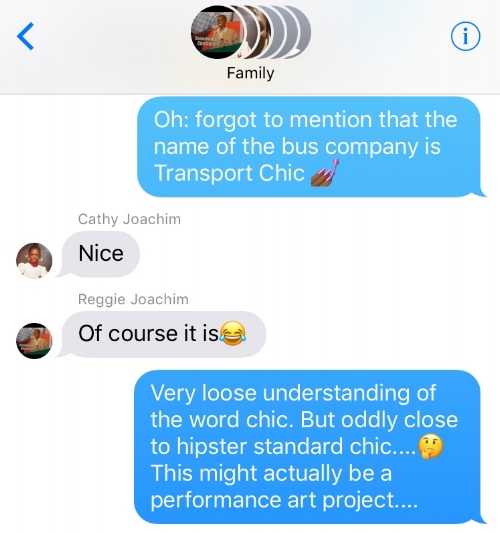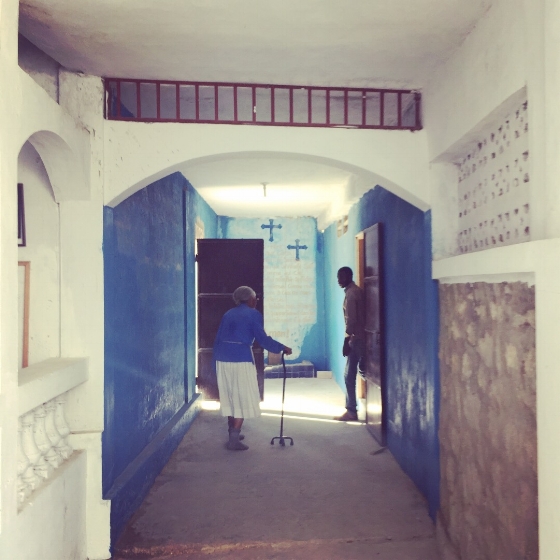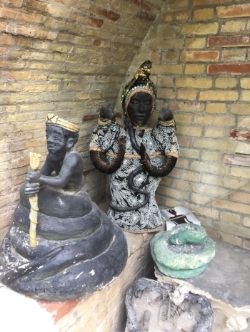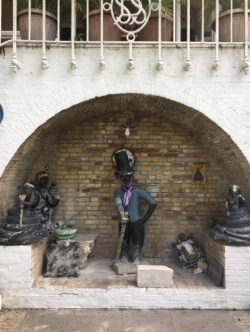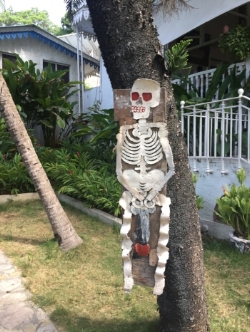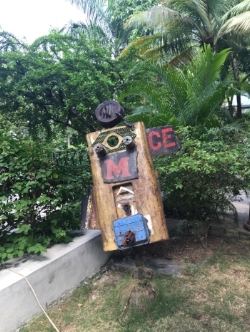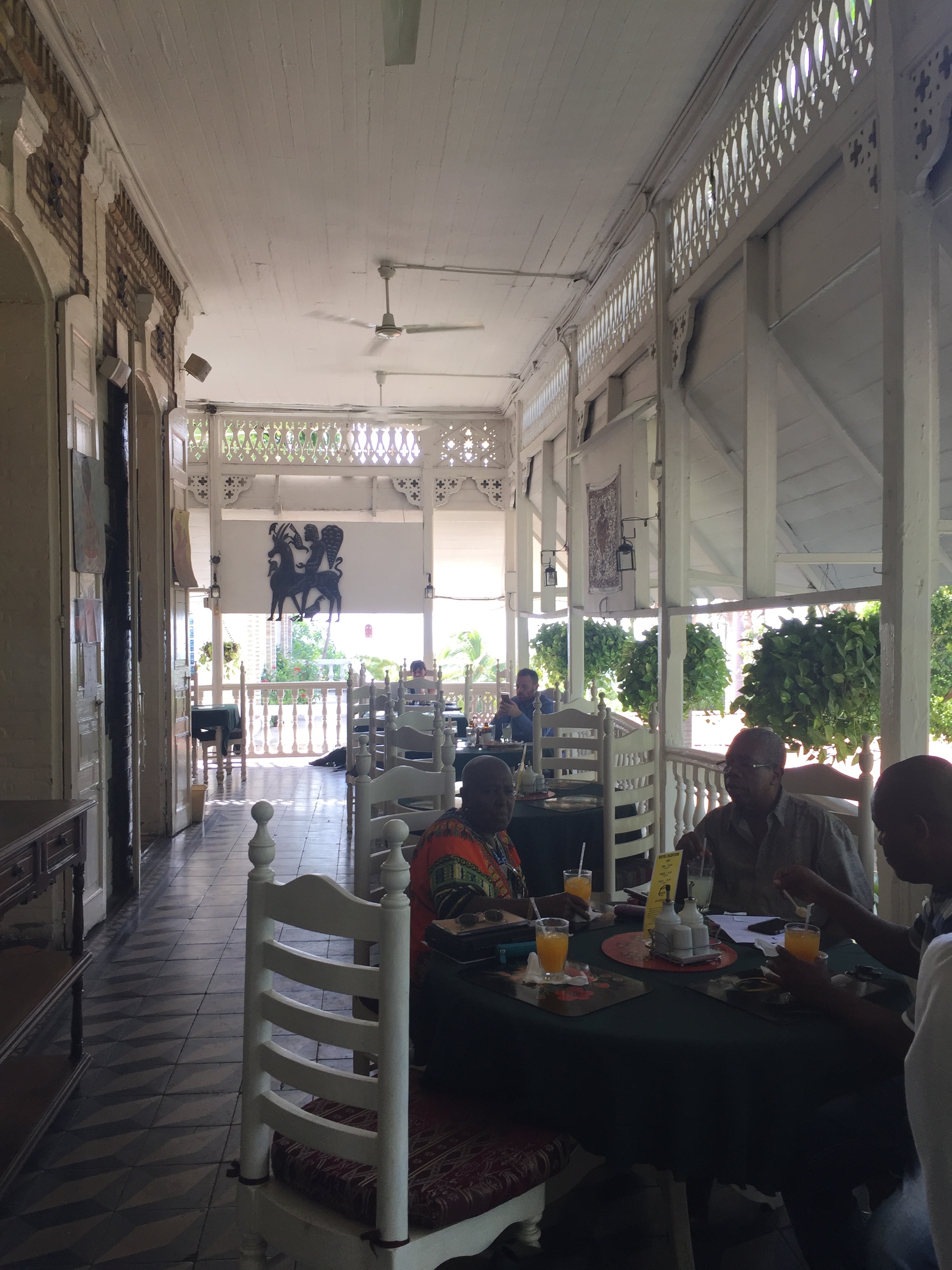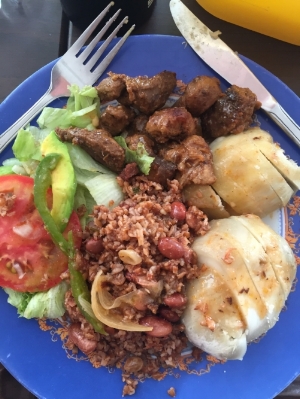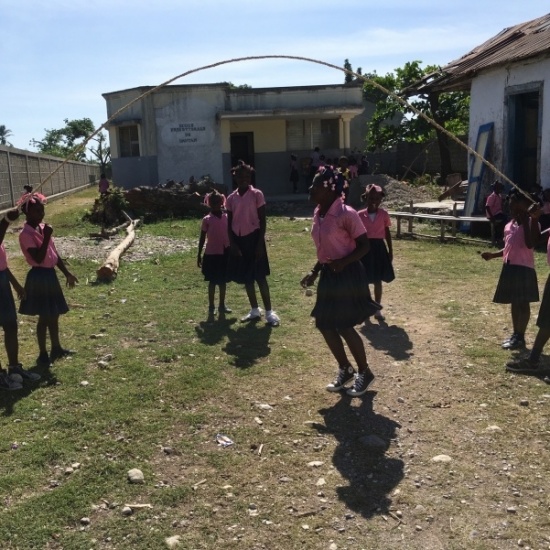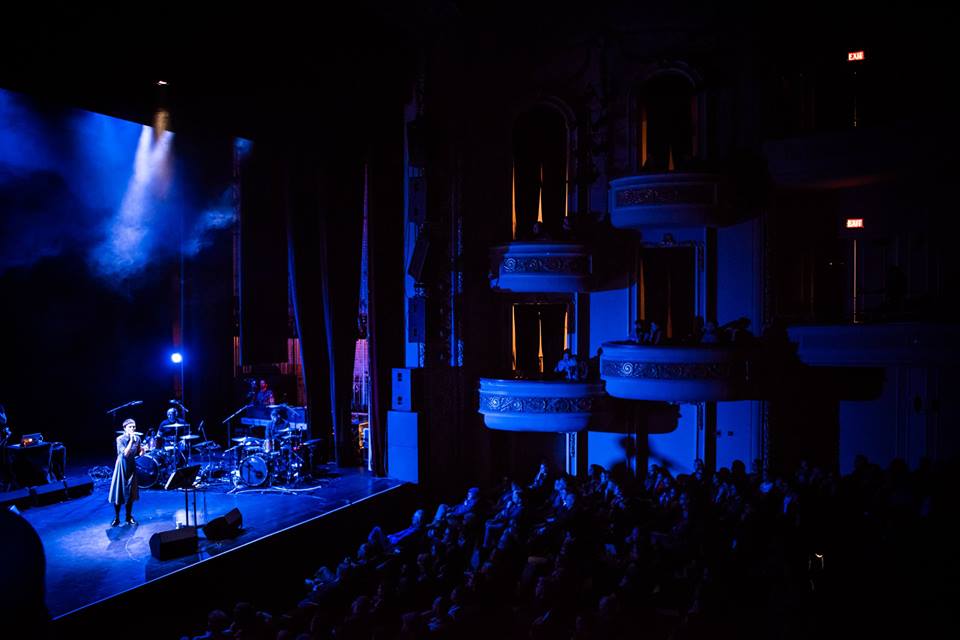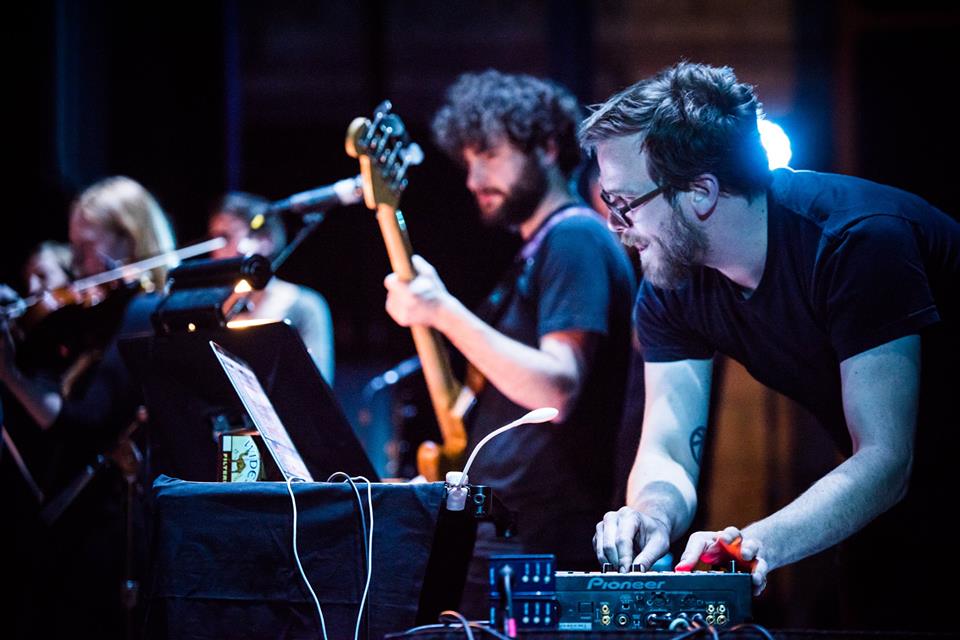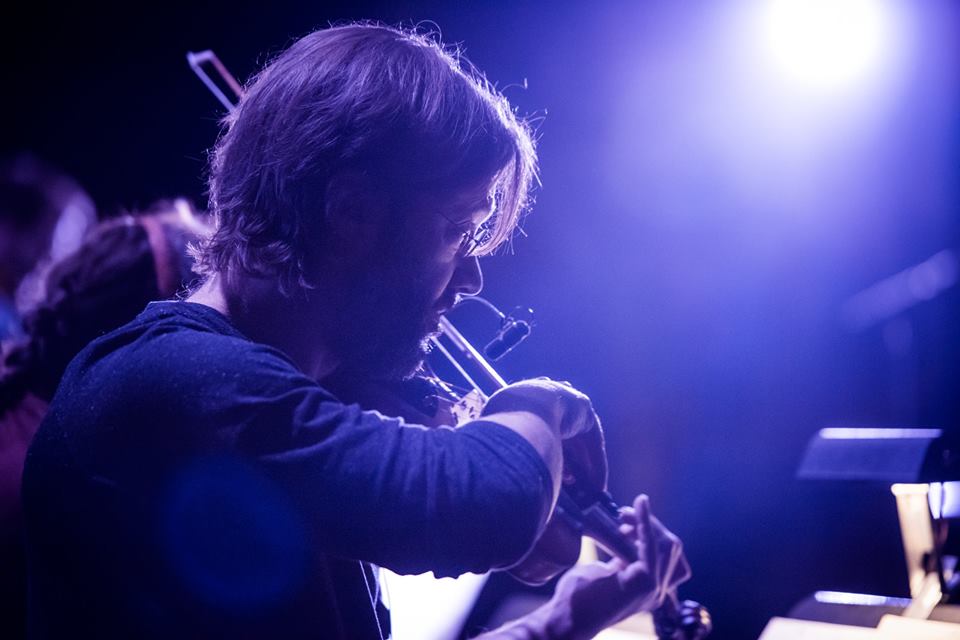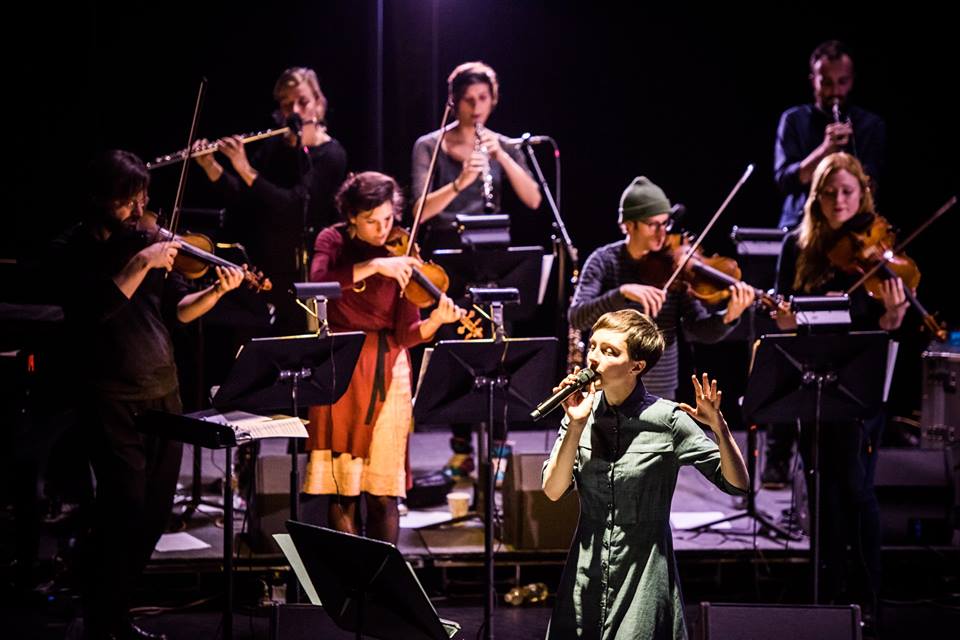SPCO Artistic Partner Patricia Kopatchinskaja is performing Luigi Nono’s La Lontananza Nostalgica Utopica Futura on Thursday, October 26, at 7:30pm at the Walker Art Center as part of the SPCO's Liquid Music Series and the Walker Art Center's Target® Free Thursday Nights. Composer and Music Theorist Ryan David Stevens gives insight into the musical and political background of Nono's enigmatic musical style.
Patricia Kopatchinskaja by Astrid Ackerman
La Lontananza Nostalgica Utopica Futura was Luigi Nono’s penultimate work. Merely a year after it was finished, Nono passed away at the age of sixty-six. It was an ambitious piece, and in a way it shows the audience a glimpse of Nono as a man, and as a composer nearing the end of his life.
Luigi Nono initially came out of the school of total serialism. The original twelve-tone technique of Schoenberg and Berg was a thing of the past by the late 1950s. Composers like Stockhausen and Boulez wanted to take the building blocks set by composers like Webern and Messaien to the next level by adding strict sets of rules to rhythm, dynamics, and timbre.
In addition to being a driving force in the serialist movement, Luigi Nono was an outspoken political activist. He joined the Italian Communist Party in the 1950s, and was a devout anti-fascist. Unlike his contemporaries, he sought to use his music to express his political views. His controversial cantata Il Canto Sospeso for choir and orchestra, sets text comprised of farewell letters by anti-fascists who were executed by the Nazis. The piece was praised for its strict use of total serialism, but was criticized for using such provocative text in a time when Nazi war crimes were not a popular topic in Germany.
However, Nono was not the only serialist to speak out against political ideologies. Nono’s predecessor and Father-in-Law, Arnold Schoenberg, wrote a handful of pieces criticizing Hitler’s reign of terror. His cantata, A Survivor from Warsaw, depicts a man living in the Warsaw ghetto watching his fellow Jews get sent to their deaths. Schoenberg also wrote a piece for string quintet and narrator that uses the text of Lord Byron’s Ode to Napoleon. The poem is a critique of Napoleon, but in the context of World War II, the poem evokes a parallel between Napoleon’s reign and Hitler’s reign.
Over the decades, Nono continued to write more politically outspoken works. Many works reflected his views against capitalism and his condemnation of fascist regimes. The political injustice and social unrest going on around the world was always on Nono’s mind when writing. Pieces like La fabbrica illuminata, A floresta e jovem e cheja de via, and Al gran sole all pushed Nono’s political and social ideologies to the forefront of his music.
La Lontananza was commissioned by violinist Gidon Kremer. The initial ideas for the piece began in 1988; Nono and Kremer went to a recording studio to record Kremer improvising on the violin, as well as recordings of other various sounds over the course of a few days. The tape portion of the piece was completed in four months. However, the solo part took much more time than Nono initially expected. Kremer did not receive a single page of the solo part until just two days before the premiere. Finally, Nono presented Kremer with the part piece by piece, on hastily handwritten manuscript paper. The work was premiered in September of 1988, but was revised in early 1989.
Although the piece was revised in 1989 it still feels rough around the edges, as if it was never really finished. In a way, the piece shows a portrait of Nono’s methods rather than a fully realized piece of chamber music. The score is hastily handwritten, and it has more instructions than actual notes. It is almost incomprehensible. The tape recording features a collage of ambient noise from the duo in the studio: chairs moving around, doors being opened and closed, bits of a conversation. On top of that, the performer isn’t able to fully prepare for the performance. The performer does not know which music stand has the next section of music on it, and they must adapt to the room by walking around the stage as the recording plays (which is also different every time).
The title was inspired by an inscription on a monastery that Nono saw while he was visiting Toledo, Spain, which read “Caminantes, no hay caminos, hay que caminar" ("Travelers, there are no paths, you must walk"). Salvatore Sciarrino, whom the piece was dedicated to, explains his interpretation of the title as such:
"The past reflected in the present (nostalgica) brings about a creative utopia (utopica), the desire for what is known becomes a vehicle for what will be possible (futura) through the medium of distance (lontananza)."
La Lontananza's use of tape comes from the technique of musique concrète, manipulating unmusical sounds to be used in a musical context. This was common in music of Nono’s contemporaries, notably Karlheinz Stockhausen, Luciano Berio and John Cage. It also implements aleatory elements, or choices determined by the performer. The tempos of the sections are to be chosen by the performer as well as the point in which the sections are played in relation to the recording.
SPCO Artistic Partner Patricia Kopatchinskaja will perform Nono’s La Lontananza Nostalgica Utopica Futura on Thursday, October 26, at 7:30pm (free, no tickets required) in galleries 4, 5 & 6 of the Walker Art Center. When asked about composers she enjoys performing in a 2016 interview, she had this to say:
“I am always looking for the musical partners, from whom I can learn something. I am not looking for ‘comfortable’ partners. I think I even have the tendency to play with extremely demanding people - something which gives me the important impulse to develop and enlarge my imagination.”
The art of Nairy Baghram (in Walker Art Center galleries 4, 5 & 6, where the performance takes place) will be on display until February 4. Deformation Professionnelle is an exhibit of sculptures, photos, and drawings that explore the human body as well as architecture and normal everyday objects. The idea is to distort objects to reflect ways in which a person can alter their worldview based on their experience.
Ryan David Stevens is a composer and theorist from Minneapolis. http://www.ryandavidstevens.com/
FOLLOW PATRICIA KOPATCHINSKAJA:
Website: patriciakopatchinskaja.com
YouTube: youtube.com/user/patkopviolin
Facebook: facebook.com/patriciakopatchinskaja
Twitter: @PatKopViolin (twitter.com/patkopviolin)
FOLLOW LIQUID MUSIC FOR UPDATES AND ANNOUNCEMENTS
Twitter: @LiquidMusicSPCO (twitter.com/LiquidMusicSPCO)
Instagram: @LiquidMusicSeries (instagram.com/liquidmusicseries)
Facebook: facebook.com/SPCOLiquidMusic



